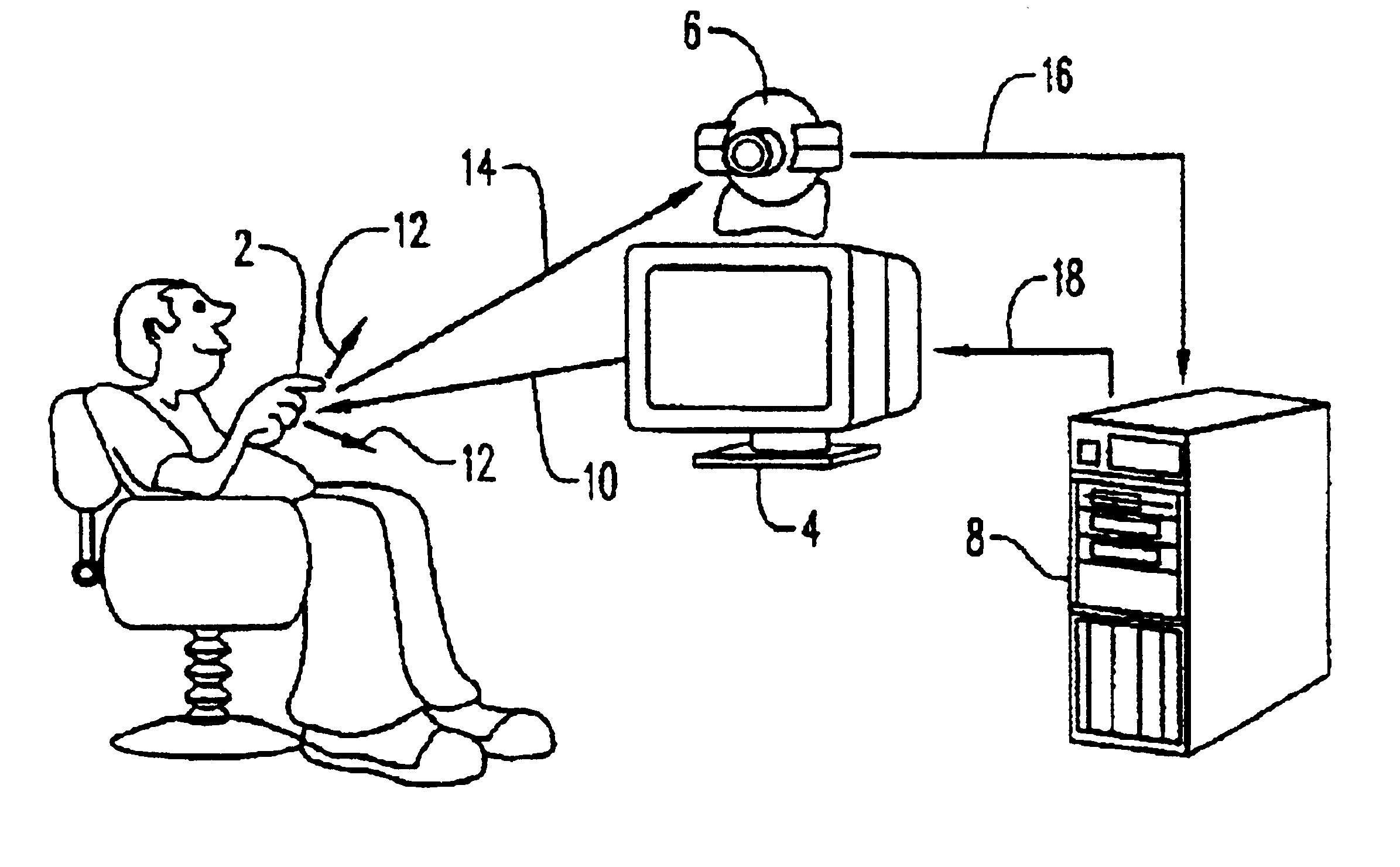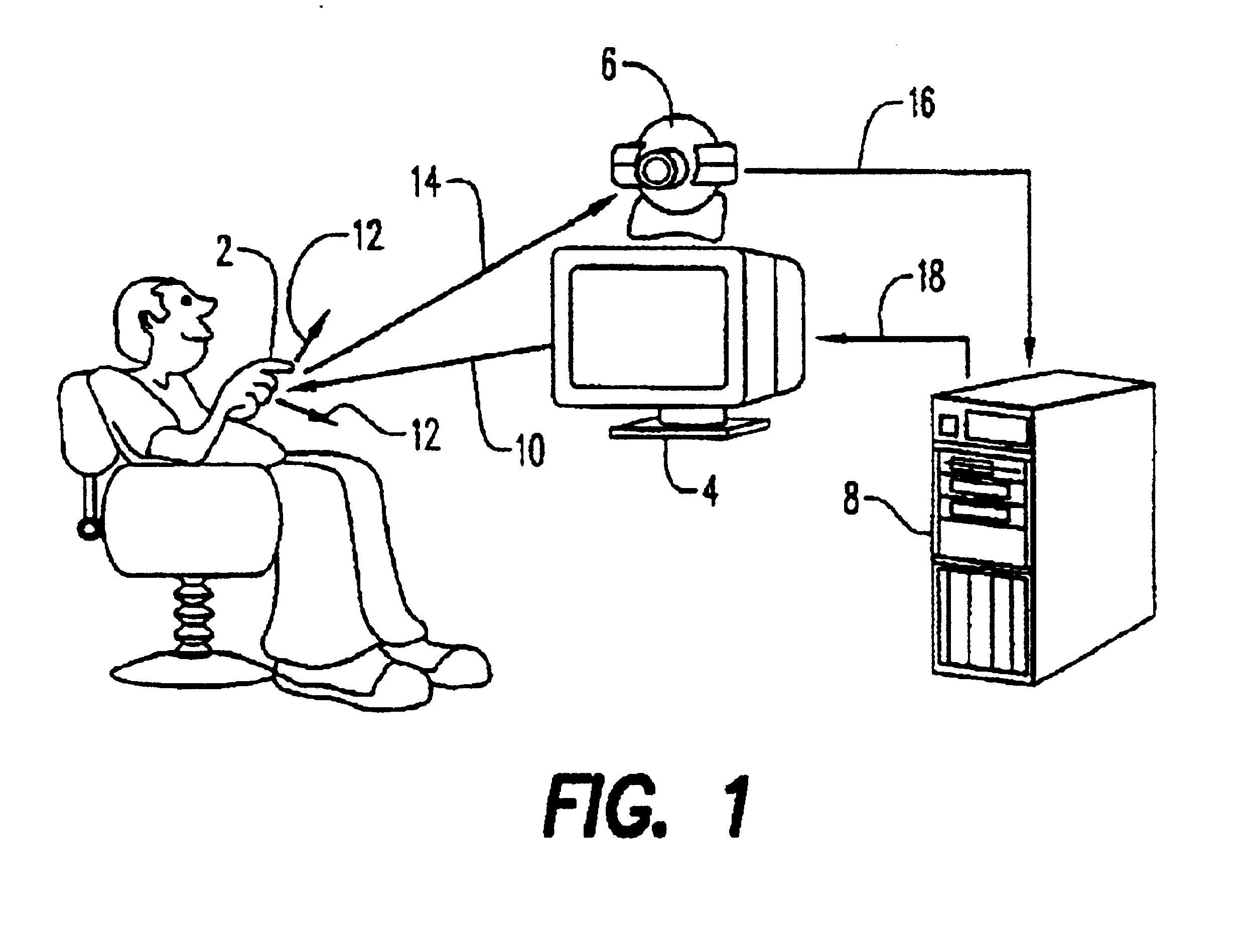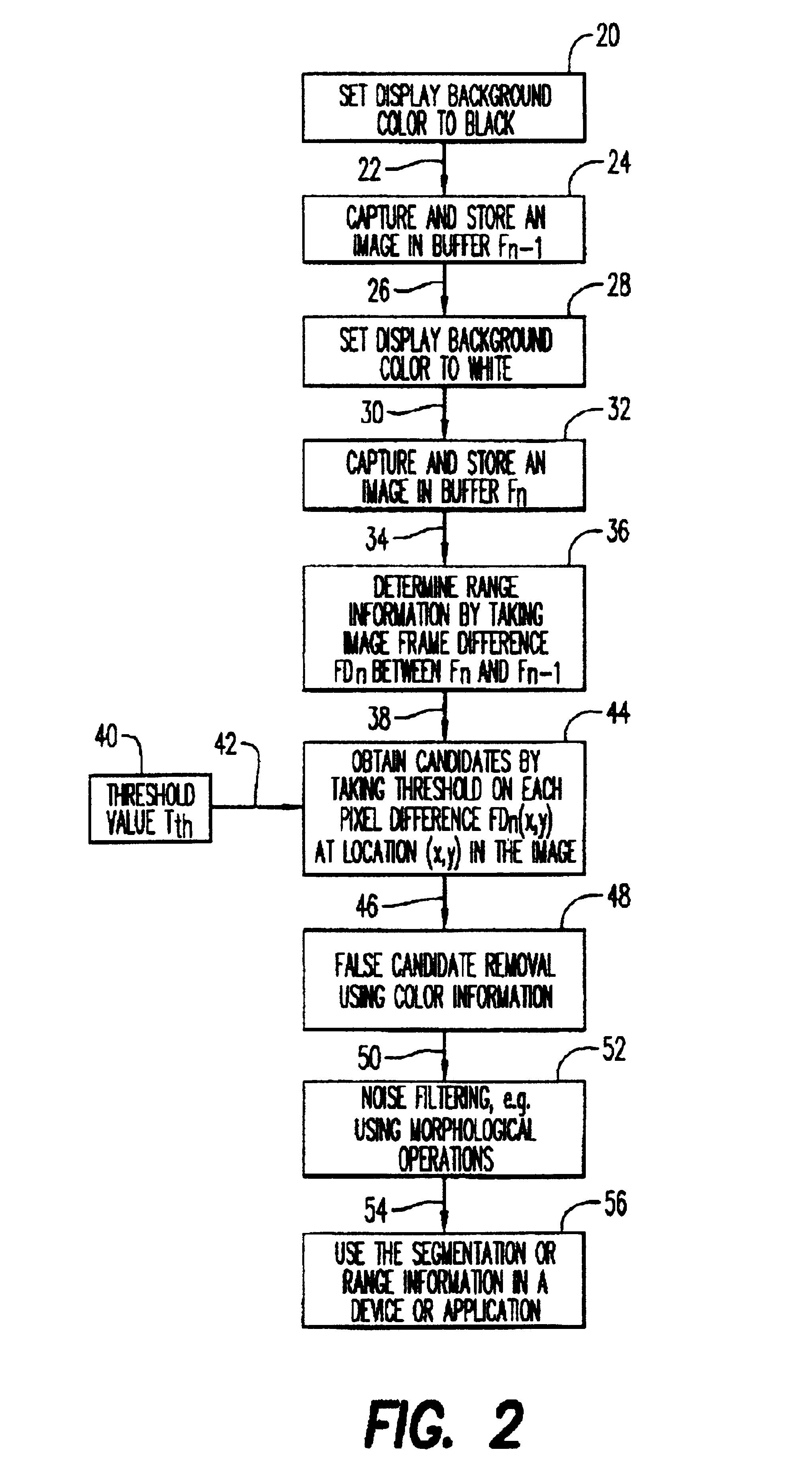Method and system for range sensing of objects in proximity to a display
a range sensing and display technology, applied in the field of methods and systems for range sensing of objects in proximity to displays, can solve the problems of expensive implementation and none of these options are practical in the normal home or office environmen
- Summary
- Abstract
- Description
- Claims
- Application Information
AI Technical Summary
Benefits of technology
Problems solved by technology
Method used
Image
Examples
Embodiment Construction
[0011]We consider an office environment where the user sits in front of his personal computer display. We assume that an image or video camera is attached to the PC, an assumption which is supported by the emergence of image capture applications in PC. This leads to new human-computer interfaces such as gesture. The idea is to develop such interfaces under the existing environment with minimum or no modification. The novel features of the proposed system include a color computer display for illumination control and means for discriminating the range of the interested objects for further segmentation. Thus, excepting for standard PC equipment and an image capture camera attached to the PC (which is becoming commonplace due to the emergence of image capture applications in PC), no additional hardware is required.
[0012]FIG. 1 is a schematic diagram of a system, according to the present invention, for determining range information of an interested object 2. The object 2 can be any objec...
PUM
 Login to View More
Login to View More Abstract
Description
Claims
Application Information
 Login to View More
Login to View More - R&D
- Intellectual Property
- Life Sciences
- Materials
- Tech Scout
- Unparalleled Data Quality
- Higher Quality Content
- 60% Fewer Hallucinations
Browse by: Latest US Patents, China's latest patents, Technical Efficacy Thesaurus, Application Domain, Technology Topic, Popular Technical Reports.
© 2025 PatSnap. All rights reserved.Legal|Privacy policy|Modern Slavery Act Transparency Statement|Sitemap|About US| Contact US: help@patsnap.com



